Norway Nature: 11 Must-See Natural Attractions of Norway

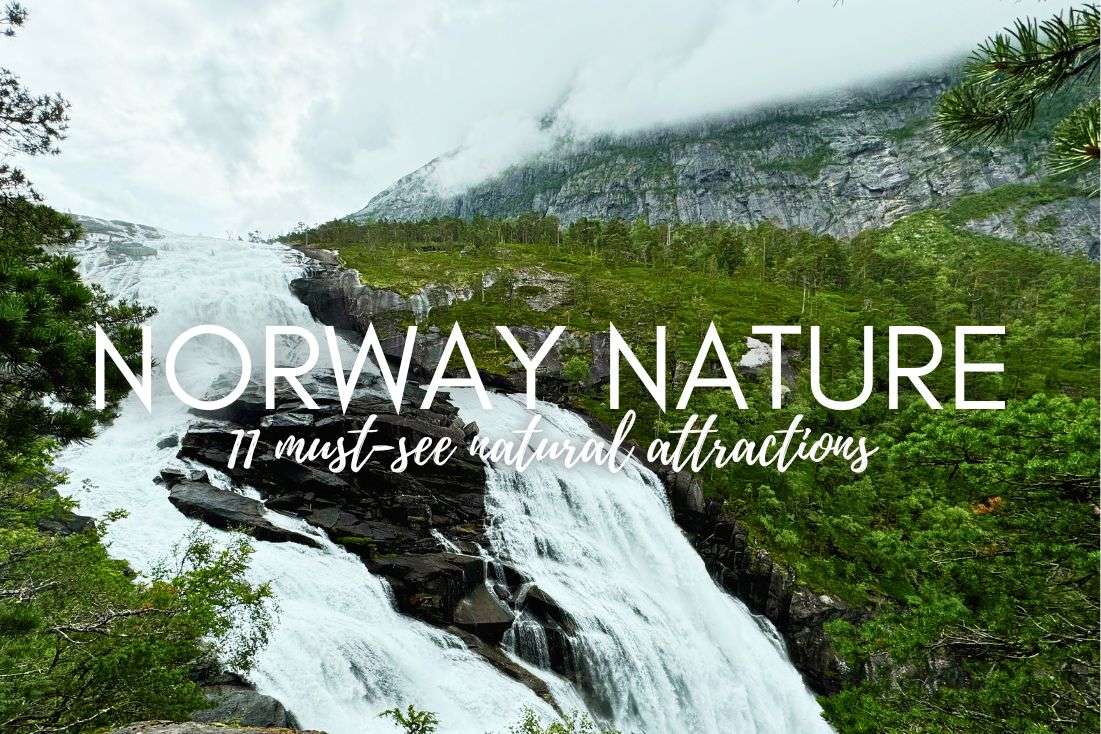
When it comes to jaw-dropping landscapes, Norway nature is in a league of its own. It’s got the famous fjords, rugged mountains, other-worldly glaciers, and even white-sand beaches. Frankly, this is a place that has every right to show off its countryside.
Fun fact: Over 10 million people visit Norway every year, which is almost double the country’s permanent population! I've been one such visitor myself, and I get it. Learn more about Norway.
If you're wondering which feats of Norwegian nature to stick on your own itinerary, read on for 11 summaries of the must-see natural attractions of Norway. You’ll also find quick tips, hotel recommendations, and answers to FAQs. Trust me—I know what I’m talking about!
And if you need even more help planning your trip, why not check out what I did for 14 days? Read my two-week Norway itinerary.
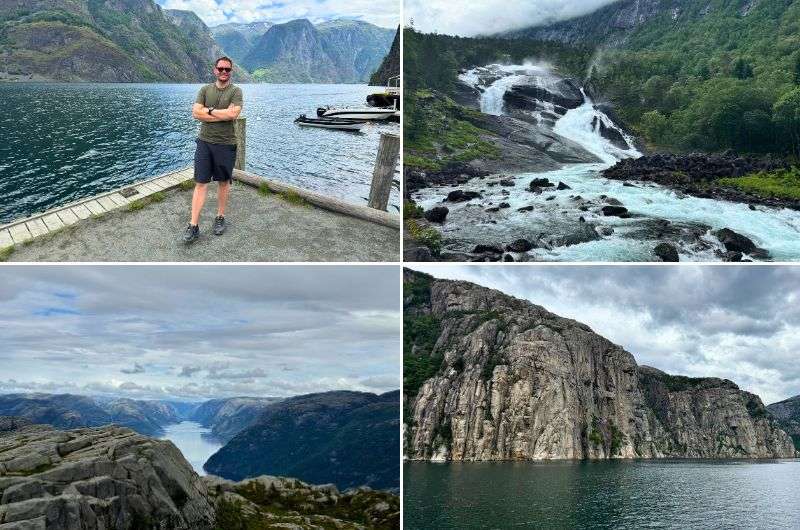
The enchanting nature in Norway deserves its own article. So here it is!
The top natural attractions of Norway you can’t miss:
- Folgefonna National Park (glacier hikes)
- Northern lights and midnight sun (astronomical phenomena)
- Aurlandsfjord (best boating options)
- Lofotodden National Park (in the Arctic Circle)
- Jotunheimen National Park (mighty hikes)
- Lysefjord (more mighty hikes)
- Trollveggen (the tallest vertical rock face in Europe)
- Hardangerfjord (one of the longest fjords in Norway)
- Trolltunga (one of Norway’s most iconic hikes)
- Jostedalsbreen (the biggest glacier in continental Europe)
- Geirangerfjord (a UNESCO World Heritage Site)
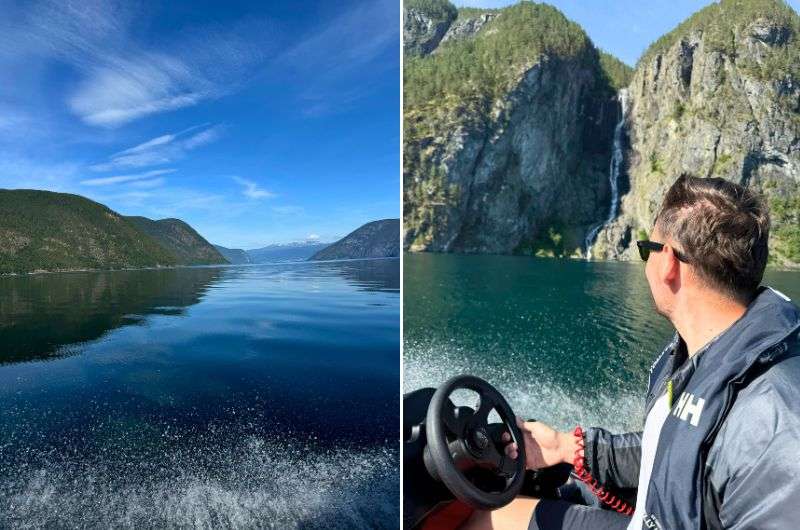
Are you ready to be surrounded by Norway nature?
Sometimes, all you need to do is take the first step... I've filtered out the best hotels in Norway for you
Save it for yourself to come back to later, or share with your friends on social media!
My quick tips for visiting the Norwegian countryside
- Pack for every season, all at once. Norway's countryside goes through mood swings like a diva. Warm sunshine at noon, rain by 2 pm, and snow if you're really lucky. Layers are your best friends.
- Check webcams before you set out. If you want to avoid the disappointment of fog ruining your epic view, online camera-views are your crystal ball.
- Ferries are your friends. They’re efficient, frequent, and surprisingly chill. Register your car on ferrypay.no and enjoy the ride without hassle.
- Tunnel vision—literally. Prepare for Norway’s epic love affair with tunnels. You’ll drive through enough to feel like a mole, but hey, they cut travel time and often pop out into stunning scenes. However, you have to pay a toll on some of them; follow the instructions to register your car at epass24.com. If you’re hiring a car, the rental company should bill you.
- Be early, beat the rain. Morning excursions are golden—crisp air, empty trails, and usually dry weather. Afternoons are for cozying up with a hot drink while the rain does its thing.
- Budget and plan ahead for parking. Parking in the Norwegian countryside can be shockingly expensive and often limited near popular trails or viewpoints. Use official parking lots (even if pricey) to avoid fines and always check if payment is app-based—many spots don’t take cash!
- Gear up. Make sure you have sturdy, waterproof hiking boots, a rain jacket, and a reliable backpack. Bonus points for bringing trekking poles and a reusable water bottle. Norway’s tap water is fresher than most bottled brands!
- Costs are bearable. Overall, Norway is about twice as pricey as other Western European countries, but it’s not outrageous. You can manage—I thought Israel was way worse!
Norway natural attractions map
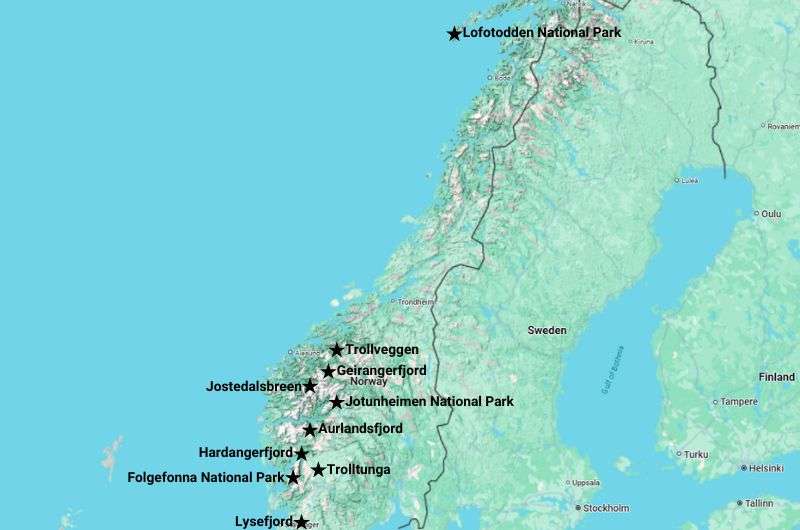
Map pinpointing the best natural attractions in Norway
1. Folgefonna National Park (glacier hikes)
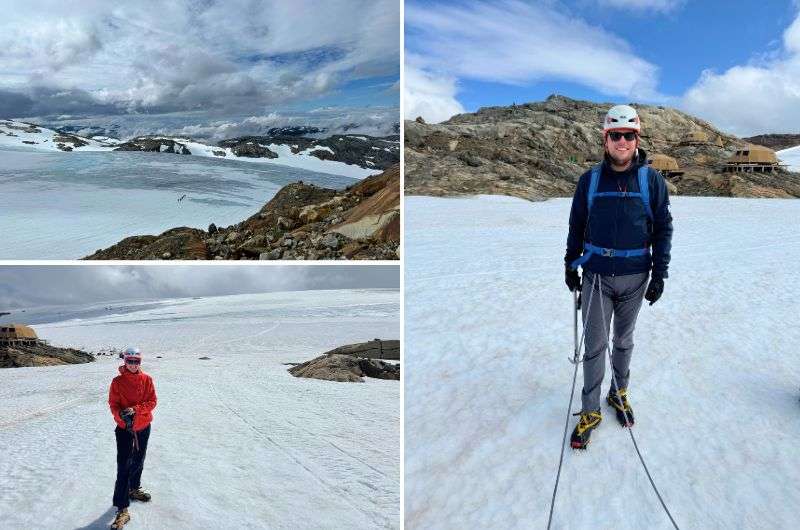
Folgefonna National Park will give you a true Nordic adrenaline experience
Practical information
- The best time to go: June–September
- My hotel recommendation: Trolltunga Hotel, Odda
- How to get there: The closest city is Bergen, around a 3-hour drive away. See this route on Google Maps for more details.
Fun fact: Bergen is the rainiest city in Europe. But stick with me—one of the best places to visit in Norway is right nearby...
Folgefonna National Park is where you want to be in Norway for the best glacier action. Its namesake, the Folgefonna glacier, is known as a maritime glacier, and it exists thanks to massive amounts of precipitation from Norway’s west coast. It’s the southernmost glacier in Norway, and the third-largest glacier on the mainland.
Okay, now that’s your geography lesson over with, I can tell you from personal experience that walking on Folgefonna is a really cool thing to do—figuratively and literally. For NOK 1,905 (USD 174), Go Fjords offer blue ice-climbing tours in the summer months, including transport to and from Bergen if you need it, as well as the necessary equipment.
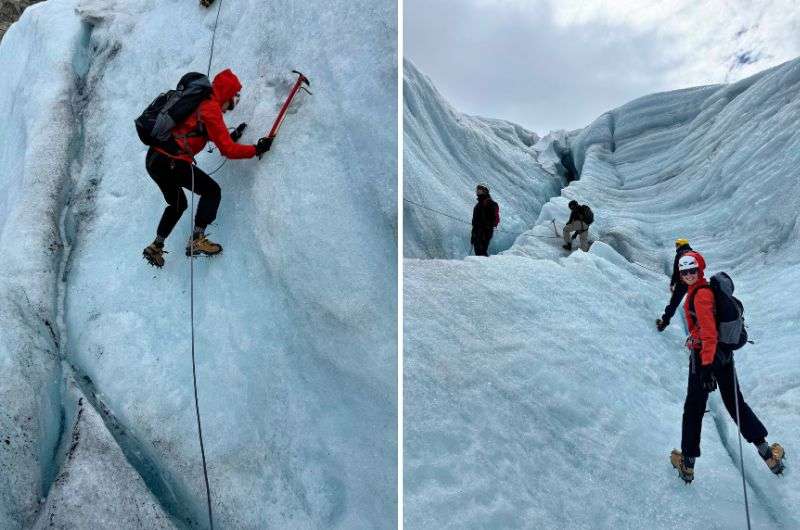
Climbing on ice in Folgefonna National Park
But that’s not the only way to get up close and personal to a glacier in this national park! You can also take a unique kayak tour on Møvatnet lake, courtesy of folgefonni.no. It’s quite breathtaking to bob up and down in a tiny boat in among some hella mighty icebergs.
And if you ever wanted to go skiing in the middle of summer, FONNA Glacier Ski Resort’s got you covered. This place lets you carve down wide slopes with sweeping views of fjords, mountains, and even the North Sea on a good day. Just a heads-up—up top, it’s really windy and relatively chilly, even in July, when I was there.
To get more details on the best things to do in Folgefonna National Park, check out my article on the best national parks in Norway:

2. Northern lights and midnight sun (astronomical phenomena)
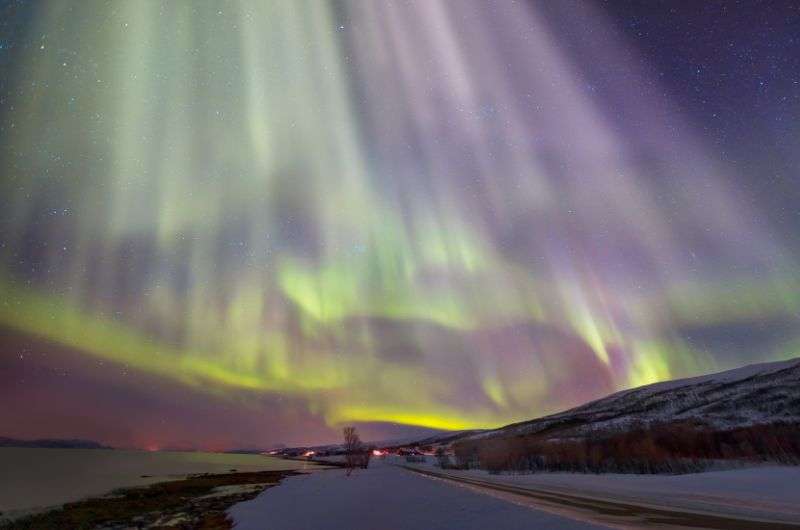
Northern Lights—the dream of many
Practical information
- The best time to go: November–February (for the northern lights); May–July (for the midnight sun)
- My hotel recommendation: Scandic Sortland, Sortland
- How to get there: Head north, ideally somewhere between latitudes 65° and 72°, to have the best chance of seeing the northern lights especially. Lofoten and Vesterålen, for example, is a great destination in Northern Norway.
Norway isn’t just fjords, fish, and a functioning social democracy. (I know, nobody told me, either!) It’s also your VIP pass to two of nature’s greatest astronomical shows: the northern lights and the midnight sun.
The northern lights are the closest thing you’ll get to a cosmic disco, best seen between late September and late March. Norway’s Arctic regions such as Lofoten and Vesterålen Islands are prime spots for this natural wonder, where the skies are darkest and clearest.
What's the catch? This is also the very coldest time to go to Norway, so pack your thermals!
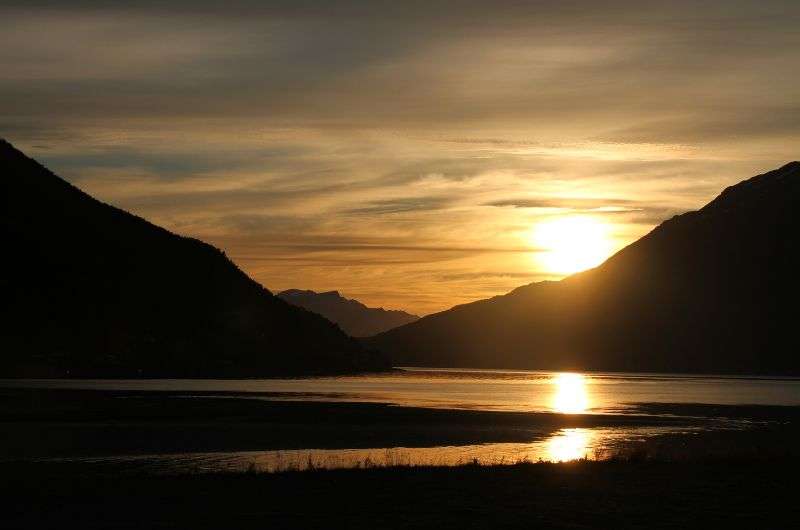
...and the sun at midnight. How cool is that?
Mini science lesson: The aurora is caused by charged particles from the sun colliding with Earth’s atmosphere. Although the result materializes in several high-latitude countries in the world, it’s got to be up there as one of the main natural attractions of Norway.
On the flip side, there’s the midnight sun—endless daylight during summer months, from late May to late July. Like the northern lights, the midnight sun is best observed in areas above the Arctic Circle. My top activity recommendations at this special time of year in Norway include night hikes, midnight kayaking, or just seeing how much you can botch your body clock.
Here’s the deal: Norway makes you work for it—bundling up in winter for the aurora or staying up all “night” for the sun. But trust me, these celestial marvels are well worth the weird hours.
You might also be interested in my article on the best time to visit Norway for different activities:

3. Aurlandsfjord (best boating options)
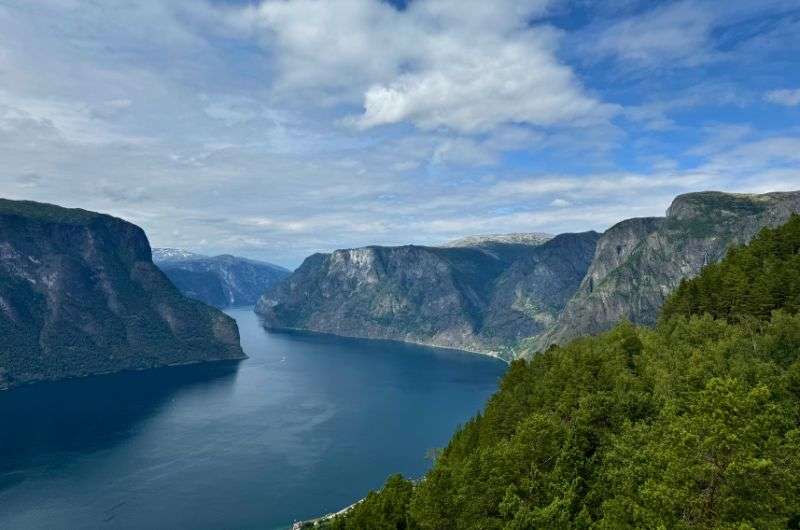
Aurlandsfjord
Practical information
- The best time to go: June–August
- My hotel recommendation: Vangsgaarden Gjestgiveri, Aurland
- How to get there: The closest city is Bergen, around a 3-hour drive away. See this route on Google Maps for more details.
Your, my, and pretty much everyone else’s reason for visiting Norway is the fjords. But why should you visit Aurlandsfjord in particular? Well, I’m glad you asked...
Aurlandsfjord is the quieter, more introverted sibling of the UNESCO-stamped Nærøyfjord (it’s right next to it), and it’s proof that good looks run in the family. Towering cliffs, glass-like water, and the air? It's so fresh that I considered bottling it and starting your own health brand.
I’ve seen a lot of Norwegian fjords, but Aurlandsfjord was the one to give me my favorite boating experience. Sure, you can go on a cruise if you want, but my advice is to rent your own motorboat.
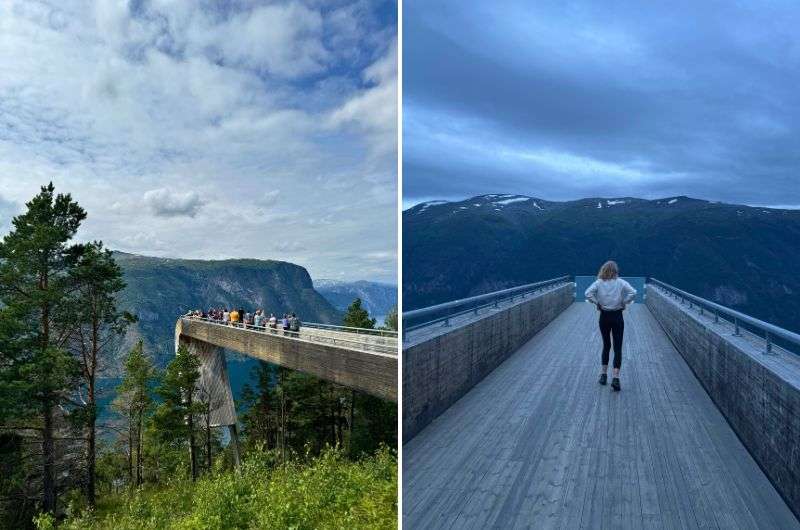
This is the Stegastein Viewpoint
I recommend going with Flåm Boat Rental (surprisingly, in the fjord village of Flåm), and I promise you won’t be disappointed by the whole new perspective you get from being in the driver’s seat.
What else is so great about Aurlandsfjord? It's where you’ll find the Flåm Railway (Flåmsbana)—one of Norway’s top attractions. This historic 20-kilometer (12.4-mile) train line drops from the not-even-big-enough-to-be-a-village of Myrdal, at 860 m (2,822 ft), down to Flåm, at sea level.
And don’t miss out on the Stegastein Viewpoint located just outside Aurland, and ideally, head up at sunset to avoid the crowds. This is a viewing platform that comes out from the cliff edge, suspended 650 m (2,133 ft) above the fjord. It’s pretty stomach-churning, but the view of the Aurlandsfjord in its entirety is incredibly breathtaking.
These are just three of my top things to do around Aurlandsfjord. If somehow, you’re not sold yet, read more about this little piece of paradise in my article on the best Norwegian fjords.
4. Lofotodden National Park (in the Arctic Circle)
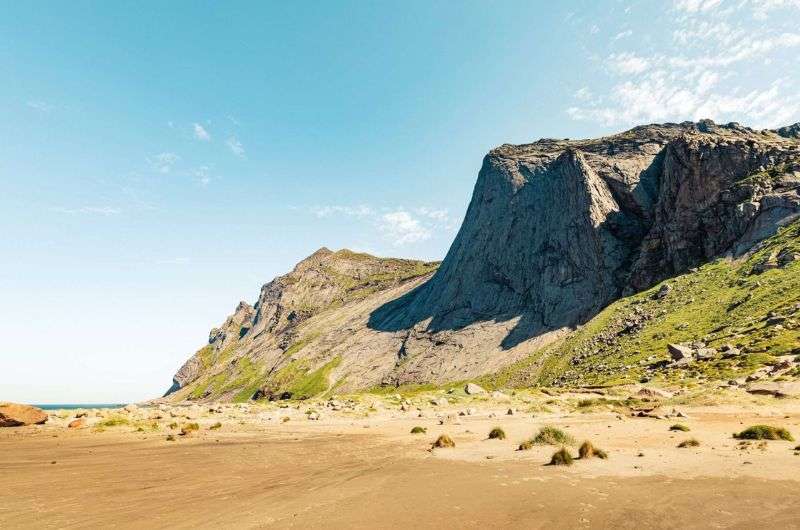
Lofotoddennp.com
Practical information
- The best time to go: November–February (for the northern lights); May–July (otherwise)
- My hotel recommendation: Eliassen Rorbuer, Reine
- How to get there: To be honest, it’s a pain. The best way is to fly to Bodø, rent a car and take the ferry to Moskenes on the tip of the archipelago.
This pick is for you if you're looking for an epic Arctic holiday! Lofotodden National Park on the Lofoten Islands is wild and windswept, but temperatures are pretty mild considering the high latitude. Here, you’re never far from rugged mountains, steep ridges, and green valleys. I’d even say it reminded me of the Isle of Skye.
And if you’ve ever read my blog before, you know what this means: hiking opportunities! The standout trail in Lofotodden for me is Reinebringen. Sure, the hike isn’t for the faint of heart (cue me gasping like I’d just climbed Everest), but it’s only a few hours, and the 360-degree view? So worth the burning calves.
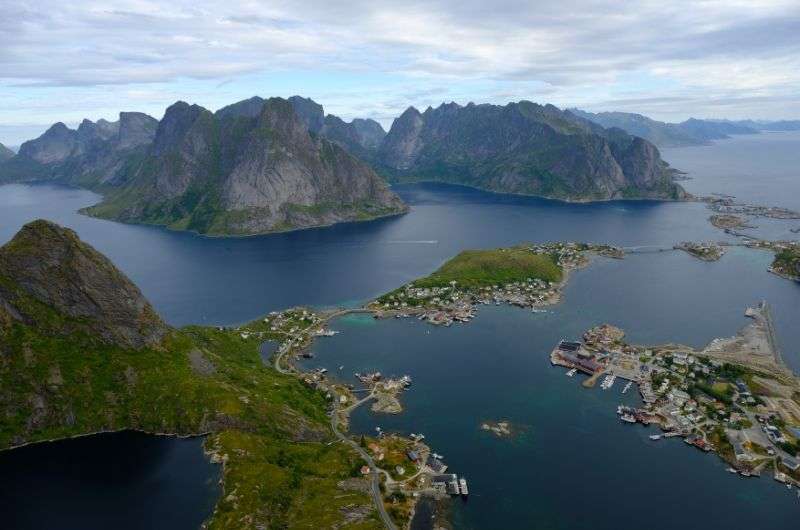
Reinebringen
On the ground again, and this place has some beautiful white-sand beaches and turquoise waters so clear, I had to double-check that I was still in Norway. Lofotodden isn’t just a playground for hikers and photographers, but for anyone needing a detox from the stresses of life.
Note: You need to go to Lofotodden in the winter if you want to see the northern lights. It’s pretty much either the aurora or the hikes, as winter definitely isn’t the best time to go trekking up some rocky Arctic peak.
5. Jotunheimen National Park (mighty hikes)
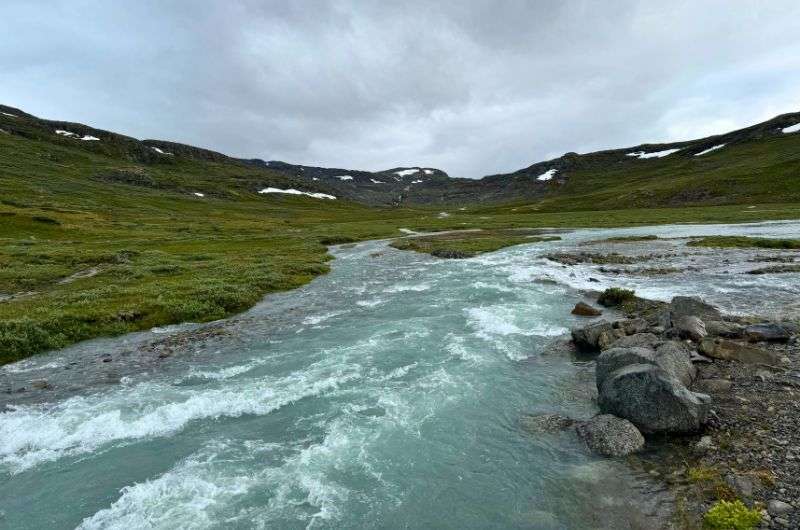
Jotunheimen National Park is full of great hikes!
Practical information
- The best time to go: June–September
- My hotel recommendation: Radisson Blu Resort, Beitostølen
- How to get there: It takes around 4 hours to drive from Oslo and around 7 hours from Bergen. There are also buses and trains going to Jotunheimen; head to entur.no to plan any journey.
Jotunheimen is one of the most popular national parks to visit in Norway, and I for one am really glad I’ve been. It’s a rugged landscape, full of towering peaks and glacial plains, and it’s perhaps the best place in the entire country for alpine and cross-country skiing, cycling, climbing, and even driving. Yep, I’m saying it!...
Hiking is one of the best things to do in Jotunheimen, and because this is my jam, I have two incredible trails to recommend to you.
First, there’s Galdhøpiggen, Scandinavia’s highest peak at 2,469 m (8,100 ft). It’s an 11-kilometer (6.8-mile) hike with only 700 meters of elevation gain, but don’t let that fool you—it’s no walk in the park.
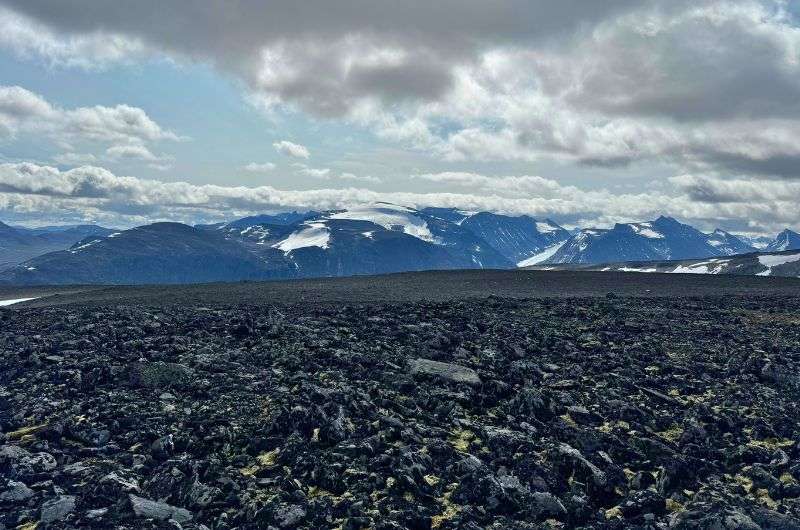
Hike to the highest peak of Scandinavia—Galdhøpiggen
Between boulder-hopping, searching for the trail, and navigating ice patches, this mountain keeps you on your toes. At the summit, you get incredible views of Jotunheimen’s desolate, glacial landscape, which is both dramatic and oddly peaceful. On a clear, windless day, the silence at the top feels otherworldly—kind of like Antarctica... but without the penguins.
Then there’s the Besseggen Ridge hike, a point-to-point trail that requires a bit of logistical juggling (read: ferry rides). It’s a long, tough trek, but the views over Gjende lake are unreal, with a total Yellowstone vibe.
Tip: Start early to dodge the crowds, and if you want to skip the full ridge, just hike up to Veslfjellet for the views—nobody’s judging.
Personally, I think Besseggen Ridge should officially be the best hike in Norway. Read the extensive account of my experience hiking Besseggen Ridge.
6. Lysefjord (more mighty hikes)
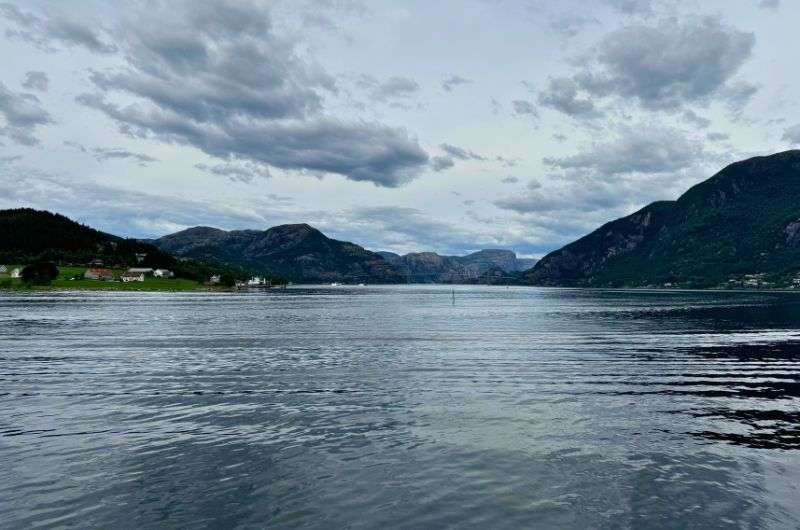
Lysefjord
Practical information
- The best time to go: June–August
- My hotel recommendation: Ydalir Hotel, Stavanger
- How to get there: The nearest (very near) city to Lysefjord is Stavanger. It only takes around an hour to drive there—see this route on Google Maps for more details
Lysefjord surprised me. This is one of the most popular places to visit in Southern Norway, and I expected raw wilderness. But instead, I found a vibe more like Vancouver—a perfect blend of rugged beauty with a refined, almost urban edge... (I guess I shouldn’t have been that shocked, seeing as it’s basically on Stavanger’s doorstep.)
This is a popular choice of Norwegian fjord to visit because it’s the setting for not one, but two of Norway’s most iconic hikes: Kjerag and Pulpit Rock.
I call Kjerag “the mother of steep climbs”. It’s tough and uncompromising—believe me, you’ll need the chain ropes—but it’ll be an experience you’ll never forget.
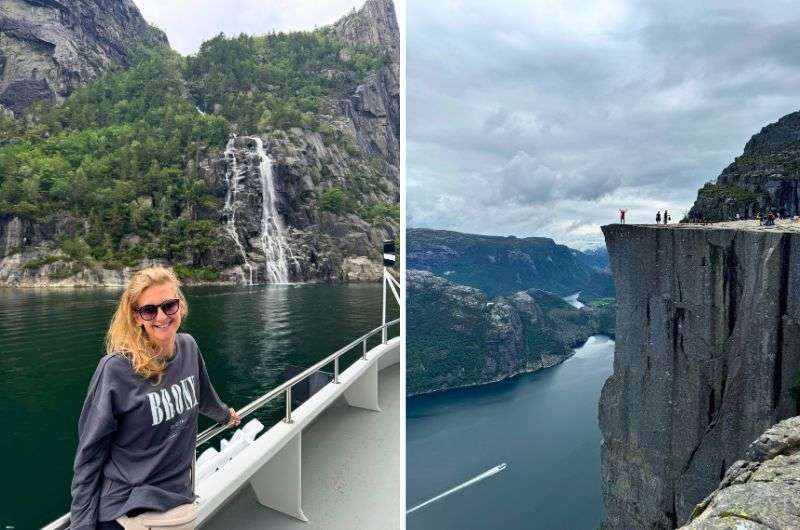
Pulpit rock is on the right, my beautiful girlfriend surrounded by Norway nature on the left
Its real showstopper is at the top of the mountain: Kjeragbolten. This is a large boulder wedged between two cliffs, luring thrill-seeking tourists to step onto it. I didn’t indulge because a death wish I ain’t got.
Pulpit Rock is nicer, like a kitten of a hike in comparison to Kjerag. It’s a trail that comes with a dose of comedy, too, as you do spot some morons on the way in flip-flops. Okay, it’s tamer trek, with the worst incline at the beginning as opposed to Kjerag’s constant steep scramble. But it’s not a day at the beach, y’know?
Why’s it so popular? Well, who wouldn’t love to end their walk by standing on a cliff platform 600 m (1,969 ft) above a gorgeous fjord? Not me! Read all about my own experience on the Pulpit Rock hike.
Pro tip: If you’re too lazy to go hiking, (I mean, we can’t be friends, but) you might like to know that a more relaxed way to see this Norwegian nature hit is by cruise. Rødne Fjord Cruise operates 3.5-hour tours of Lysefjord, right from the harbor in Stavanger.
7. Trollveggen (the tallest vertical rock face in Europe)
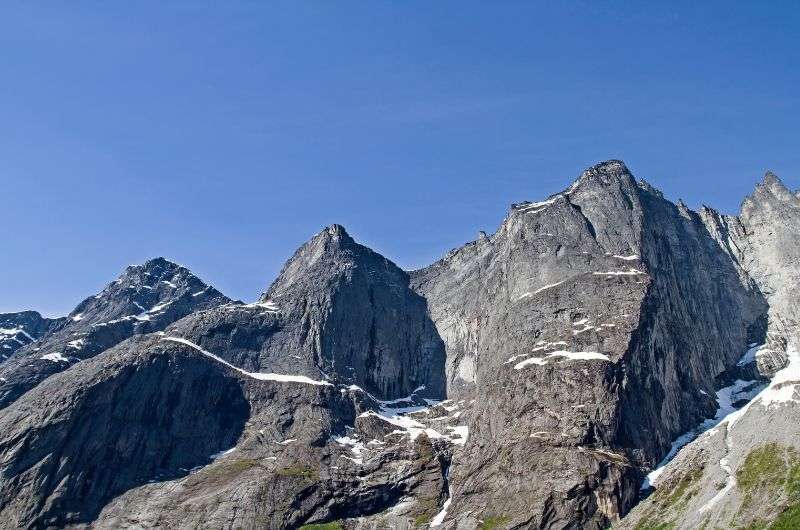
Trollveggen
Practical information
- The best time to go: April–October (the visitor center is open in June, July, and August)
- My hotel recommendation: Thon Hotel, Ålesund
- How to get there: The closest city is Ålesund, just over 1.5 hours’ drive away. See this route on Google Maps for more details.
Trollveggen (“the Troll Wall”) isn’t just a rock face—it’s the rock face. Standing at 1,100 m (3,608 ft), it’s the tallest vertical cliff in Europe, so obviously, I had to include it on a list of the best nature attractions of Norway, despite how grossly intimidating it is.
Trollveggen has always been a magnet for daredevils, from climbers who think ropes are optional to base jumpers who... well, let’s just say they have life insurance.
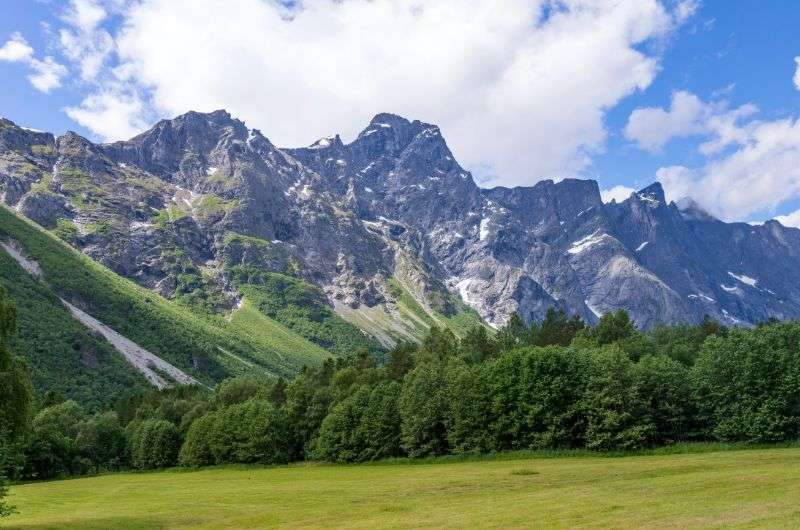
The Troll Wall
For me as a mere mortal, it was all about gazing up from the base, neck craned, thinking, “How is this even real?” You can also get the view from the top if you’re willing to make an ambitious trip on foot.
Fun fact: Legend says the wall is home to trolls frozen in stone. Judging by its size, I’d say they were a pretty monstrous bunch. And it’s so steep that snow can’t stick to it!
Tip: If you’re going to see Trollveggen, make sure you get a look Trollstigen, too. This mad, winding mountain road is closed at the moment (as of November 2024), but you can still get to its viewpoint. See my article on things to do in and around Ålesund for more details.
8. Hardangerfjord (one of the longest fjords in Norway)
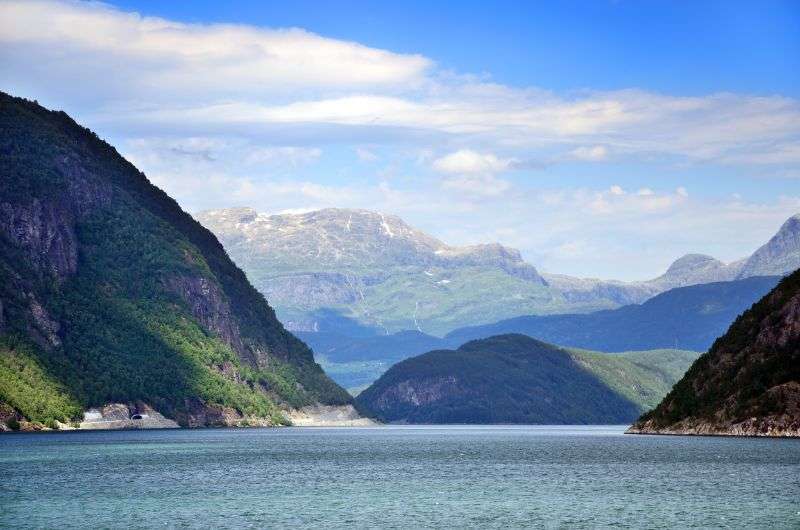
Hardangerfjord
Practical information
- The best time to go: June–August
- My hotel recommendation: Trolltunga Hotel, Odda
- How to get there: The closest city is Bergen, around a 3-hour drive away. See this route on Google Maps for more details.
Hardangerfjord, Norway’s second-longest fjord, comes with dramatic scenery and adrenaline-pumping adventures. It’s the closest fjord to both the Folgefonna glacier and the Trolltunga cliff (more on this in a moment), so basically, head here and you’ll easily be able to tick off THREE must-see nature attractions of Norway.
When it comes to the fjord itself, there are the usual boating opportunities. (But just a heads-up: most of the cruises sail all the way from Bergen.) If you’ve got the time, it’s worth taking a trip out on the amazingly teal water to take in your backdrop of jagged, towering mountains and vibrant green hillsides.
But enough of the postcard fluff for now. Let’s get back onto my favorite topic—the Hardangerfjord area is also known for its great hikes! Trolltunga is the most famous, but one lesser-trodden path that I’d recommend is the one to Nykkjesøyfossen waterfall, which actually graces you with two more waterfalls en route.
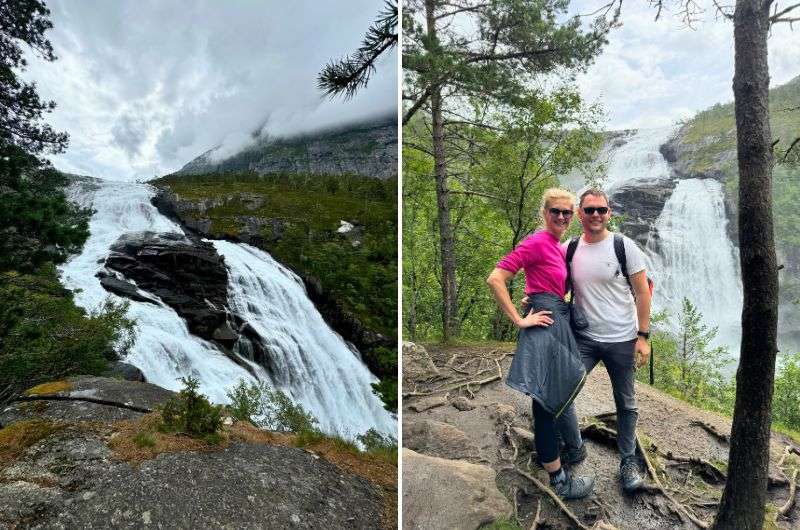
Nykkjesøyfossen waterfall
With all the rocks and the sometimes-insane amount of mist, this trail reminded me of Kings Canyon National Park in California. Seriously, sometimes you can feel the spray from 200 m (656 ft) away.
Tip: Don’t be an idiot like I was and remember to bring a good rain jacket.
Have I “peak”ed your interest? Check out this article for more details on the hike to Nykkjesøyfossen, and for my other top Norwegian hikes.
9. Trolltunga (one of Norway’s most iconic hikes)
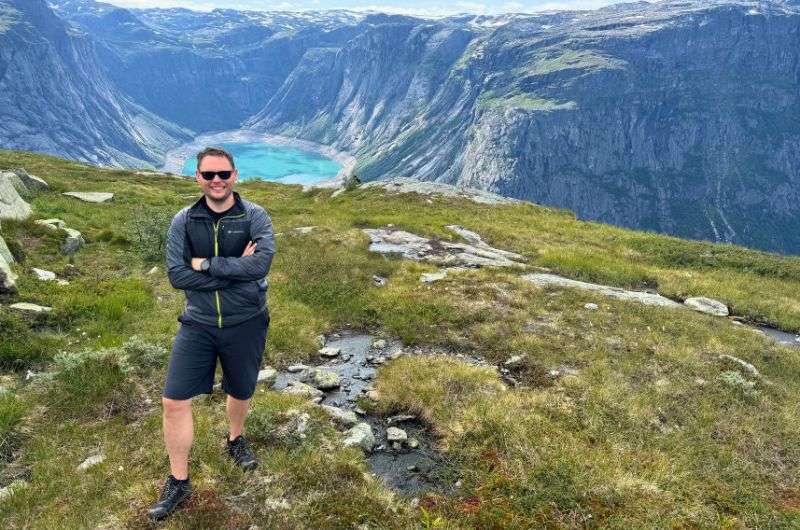
Trolltunga, another of Norway's epic hikes
Practical information
- The best time to go: June–August
- My hotel recommendation: Trolltunga Hotel, Odda
- How to get there: The closest city is Bergen, around a 3-hour drive away. See this route on Google Maps for more details.

In recent years, Trolltunga (“troll tongue”; a scarily narrow cliff protrusion 700 m [2,297 ft] above Ringedalsvatnet lake) has soared in popularity, so it’s probably fair to say that this really is one of the best places in Norway to visit.
If you’re not fit enough to do a 25.7-kilometer (16-mile) hike, I strongly advise you start hitting the gym now, because you shouldn’t miss out on this icon of Norwegian nature.
I’ll admit, halfway up, I questioned my sanity. The path starts steep and doesn’t really let up, but hey, I guess Norway isn’t really about easy wins. My legs hated me and I’d gone slightly mental, but the panoramic views you get of the mountains, the plateaus, and the lakes are nothing short of unreal.
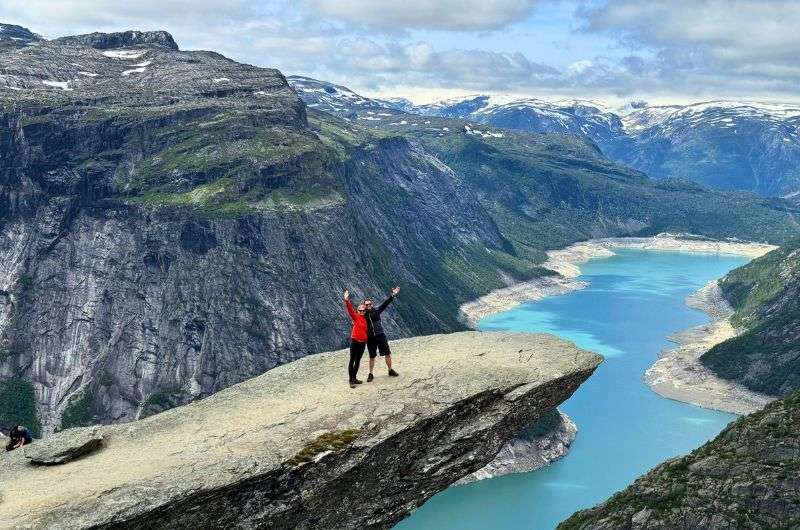
Strong feeling of victory
Standing on Trolltunga itself is a moment you’ll never forget. It’s not just about the views—it’s about the feeling. Dangling your feet over the edge, with nothing but crisp air and dizzying heights below, makes you feel invincible (or terrified, depending on your relationship with heights).
The downside? You will have to wait a while in line for a photo-op.
Pro tip: I cannot stress this enough when it comes to Trolltunga—start as early as possible to avoid getting stuck behind loads of people. Like, 8:30 am at the latest!
I have an entire article with a more detailed, delightful(!) description of my own experience hiking Trolltunga.
10. Jostedalsbreen (the biggest glacier in continental Europe)
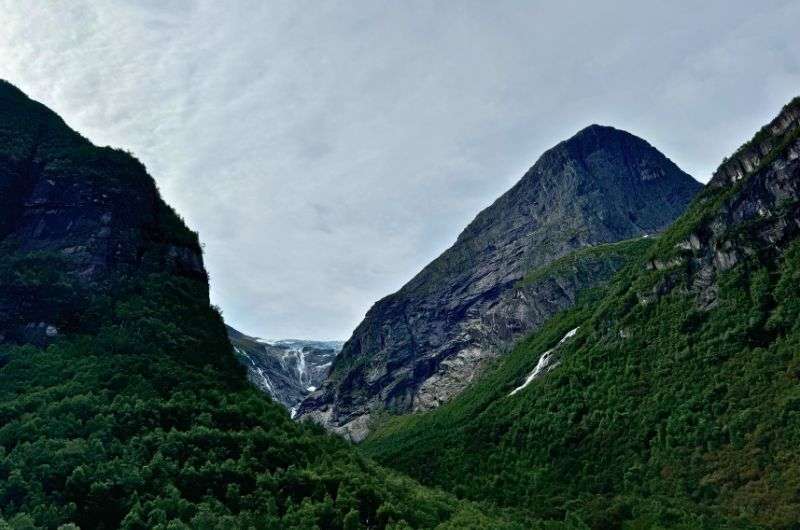
Jostedalsbreen
Practical information
- The best time to go: June–September
- My hotel recommendation: Stryn Hotel, Stryn
- How to get there: It’s kind of in the middle of nowhere, but Jostedalsbreen is a just bit further if you were traveling from Ålesund to Geirangerfjord. This is the Google Maps route directly from Ålesund.
Jostedalsbreen is the largest glacier in mainland Europe. Sprawling over 487 km² (188 mi²), it’s like a giant ice tablecloth draped across Norway’s forgotten terrain. Seeing it for the first time felt less to me like a sightseeing trip, and more like I’d been teleported to wildest Montana.
Fun fact: Glaciers are blue because they’re virtually airless and super dense, only letting blue light through. (There’s some physics I’m going to pretend to understand.)
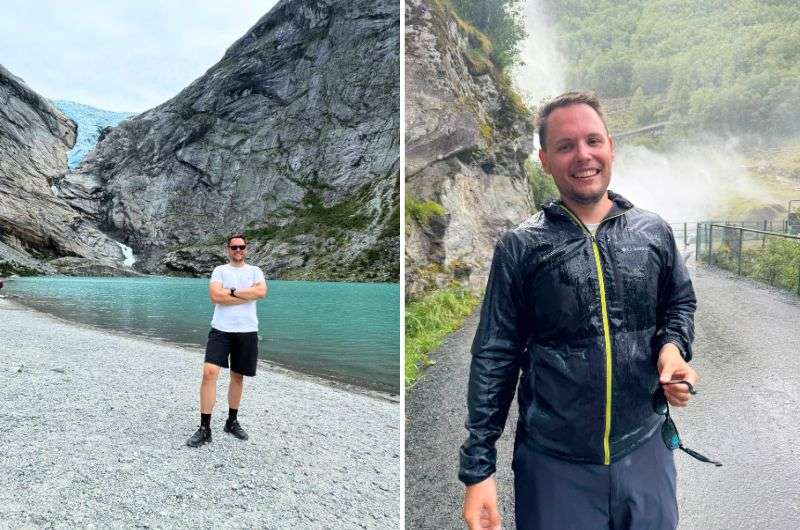
There is no shortage of waterfalls and glaciers in Jostedalsbreen—Norwegian nature in a nutshell
On a guided hike, you can go right up to Nigardsbreen, one of Jostedalsbreen’s many "arms," where the blue ice glows like it’s lit from within. Walking on it with crampons strapped to my boots was definitely one of those “Is this my real life?” moments.
The surrounding landscape of Jostedalsbreen National Park is just as jaw-dropping: rocks, valleys, and waterfalls, and that icy chill in the air that reminds you this is nature at its most untamed.
Bonus tip: Just half an hour’s drive from Stryn, you’ll find Lovatnet lake—surprisingly tranquil considering how beautiful it is. It gets a lot of swimmers in the summer, though that’s not really my thing.
11. Geirangerfjord (a UNESCO World Heritage Site)
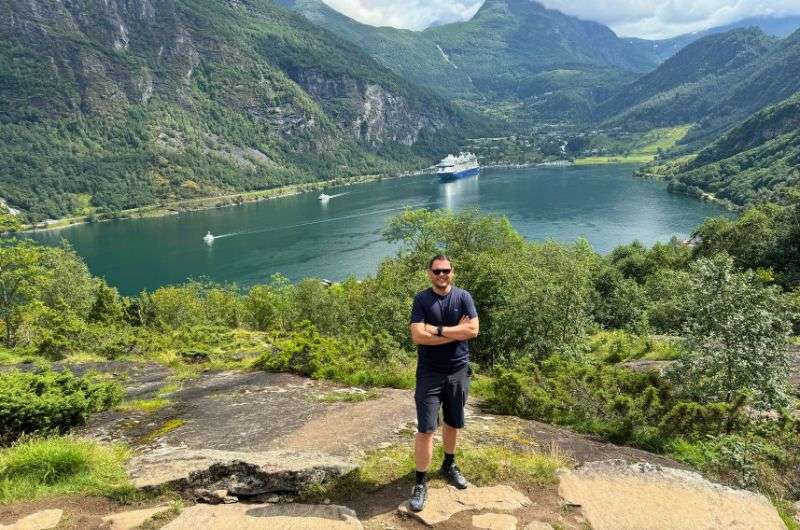
Last but not least—Geirangerfjord
Practical information
- The best time to go: May–August
- My hotel recommendation: Hotel Union Geiranger Bed & Spa, Geiranger
- How to get there: The closest city is Ålesund, just over a 2-hour drive away. See this route on Google Maps for more details.
Last but certainly not least on my list of Norway’s must-see natural attractions, I couldn’t not mention Geirangerfjord. A UNESCO World Heritage Site, this is the goody-goody of the famous fjords, but it’s popular for a reason. This is said to be one of the most beautiful fjords in the world and I’d loosely agree; I found it unbelievably dramatic.
By “dramatic”, I mean it sort of feels like you’re stepping into a movie set, with sheer cliffs, cascading waterfalls (i.e. the Seven Sisters), and water so clear and perfect, it mirrors the sky. Visiting Geirangerfjord made me feel tiny in the best way, a much-appreciated humbling experience. Just make sure you get an early start to avoid any parking chaos.
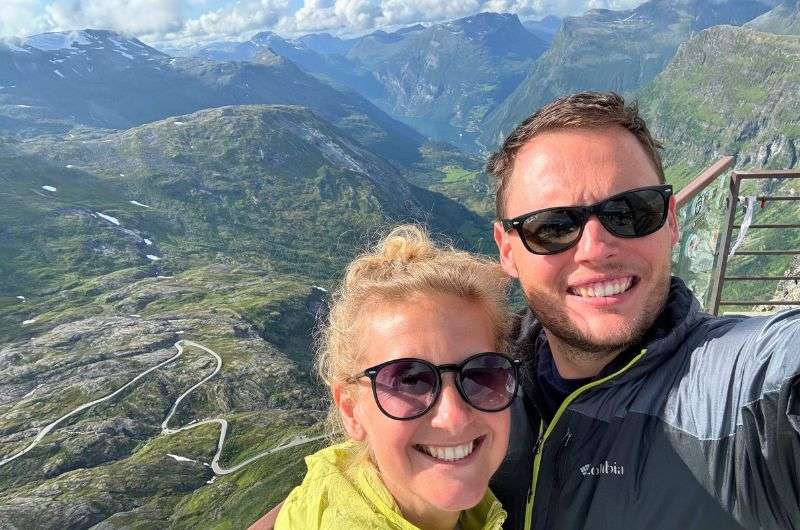
On the Skyslagg viewpoint
Pro tip: Unless you plan not to do any hiking whatsoever, it’s maybe best to pass on Dalsnibba viewpoint. Hike instead to the old Skageflå farm, or up to the top of Ovstefossen waterfall, to get a truly amazing view over Geirangerfjord. You’ll also save yourself NOK 330 (USD 30)!
FAQ 1: What nature is Norway known for?
Norway is famous for its stunning natural landscapes, including UNESCO-listed fjords like Geirangerfjord and Nærøyfjord, towering mountains, and astrological phenomena like the northern lights and the midnight sun.
It’s also home to some of Europe’s biggest glaciers like Jostedalsbreen, unique cliff formations such as Trolltunga and Pulpit Rock, and diverse national parks like Jotunheimen and Lofotodden. These spots in the Norwegian countryside offer opportunities for hiking, kayaking, and exploring pristine wilderness.
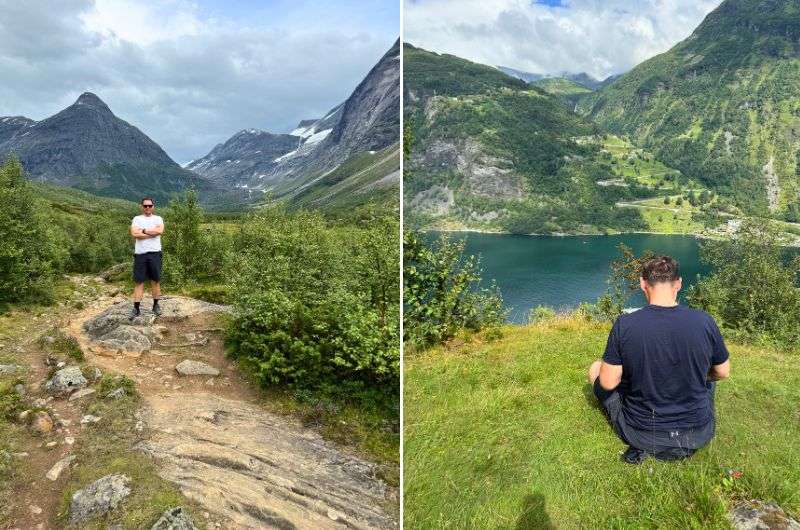
Jan, the nature lover
FAQ 2: What is the prettiest part of Norway?
Deciding on the prettiest part of Norway is like choosing the best star in the sky, but Western Norway’s fjords are hard to beat. Nærøyfjord and Aurlandsfjord, which come as a pair for visitors, showcase Norway’s most iconic scenery, with sheer cliffs, cascading waterfalls, and serene waters.
Other worthy mentions include the Lofoten Islands, beyond the Arctic Circle. This is one of the most dramatic destinations in Norway, with tall, jagged peaks rising straight from the ocean. Lastly, Jotunheimen National Park is one of the most popular national parks to visit in Norway. It’s full of towering mountains and glacial plains which offer abundant opportunities for outdoor activities.
FAQ 3: What is so special about Norway?
Norway is special for its vast wilderness, offering some of the most unspoiled landscapes in Europe and even the world. It’s a nature lover's paradise, from dramatic fjords to towering peaks and blue glacier plateaus. The prevalence of polar phenomena like the northern lights and the midnight sun also makes it a magical place to visit.
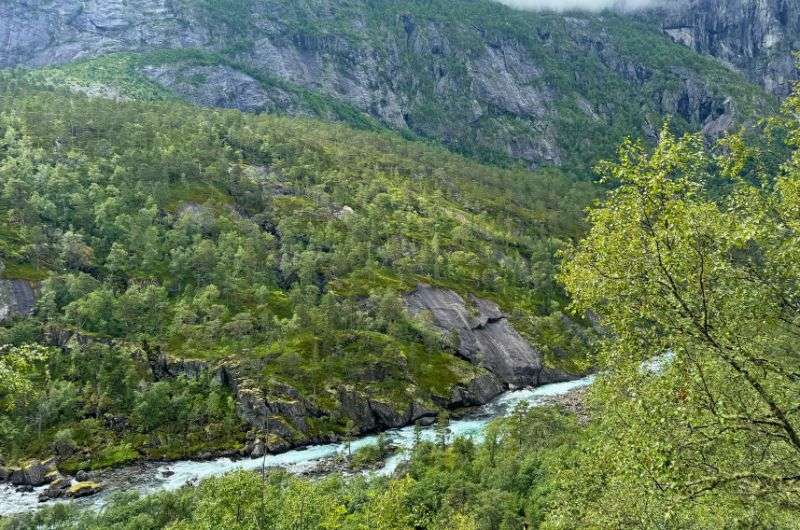
It’s stunning!
Within this countryside, Norway heavily values sustainability and outdoor exploration, with countless trails, scenic drives, and activities for adventurers. Finally, the country’s rich Viking history and cultural pride also add depth, making it a breathtaking as well as fascinating destination on all accounts.
Sometimes, all you need to do is take the first step... I've filtered out the best hotels in Norway for you
Save it for yourself to come back to later, or share with your friends on social media!
You might also be interested in reading:
- The Best 1-Week Norway Road Trip
- 11 Must-See Places in Norway
- 7 Epic Norwegian Fjords + Activities
- Hiking Pulpit Rock: My Experience
- The Best Time to Visit Norway
This post contains affiliate links. I earn a small commission if you make bookings through my links, at no additional cost to you. Thank you for your support!




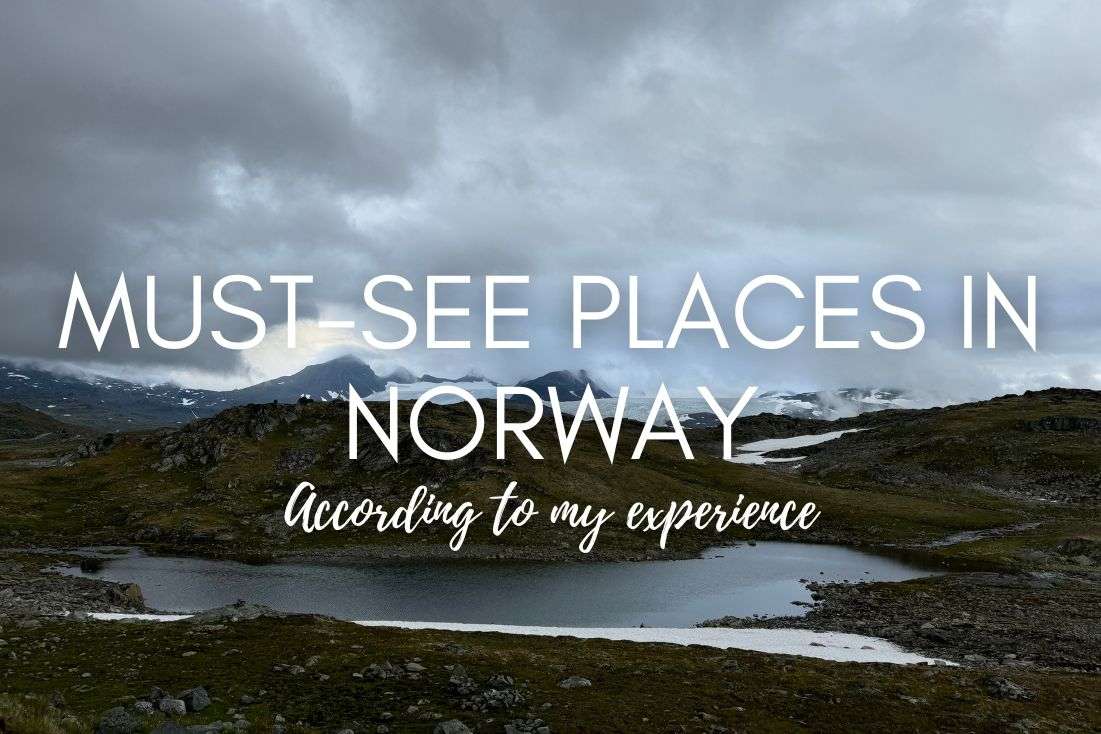
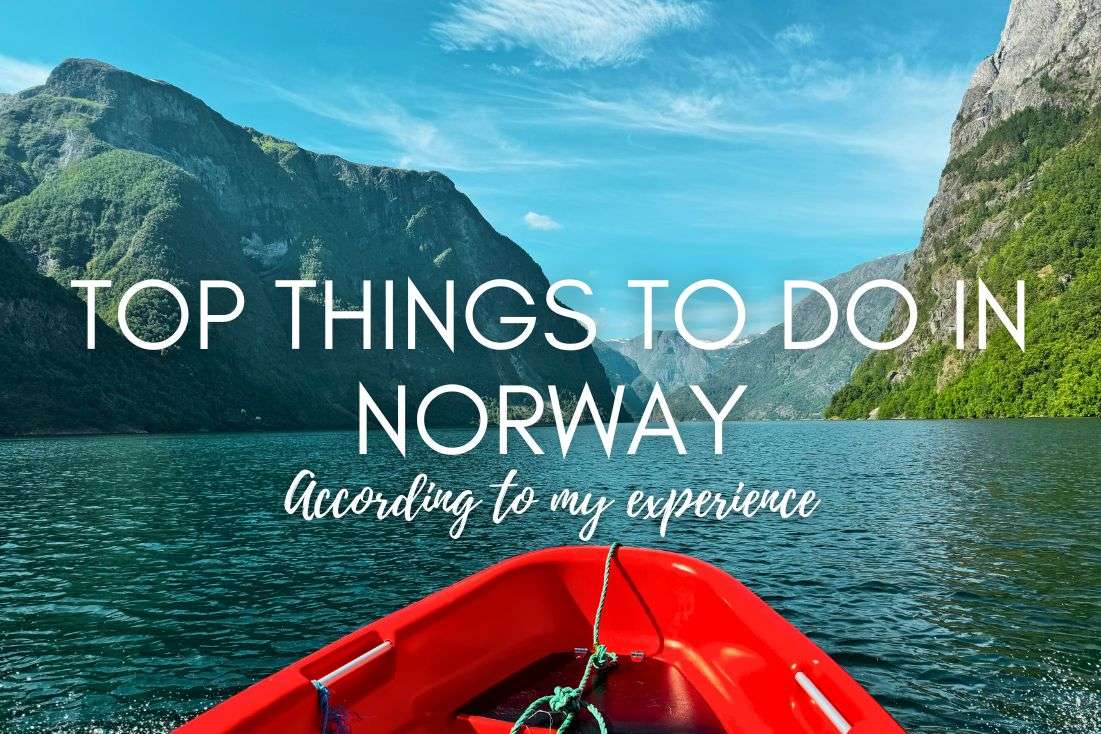
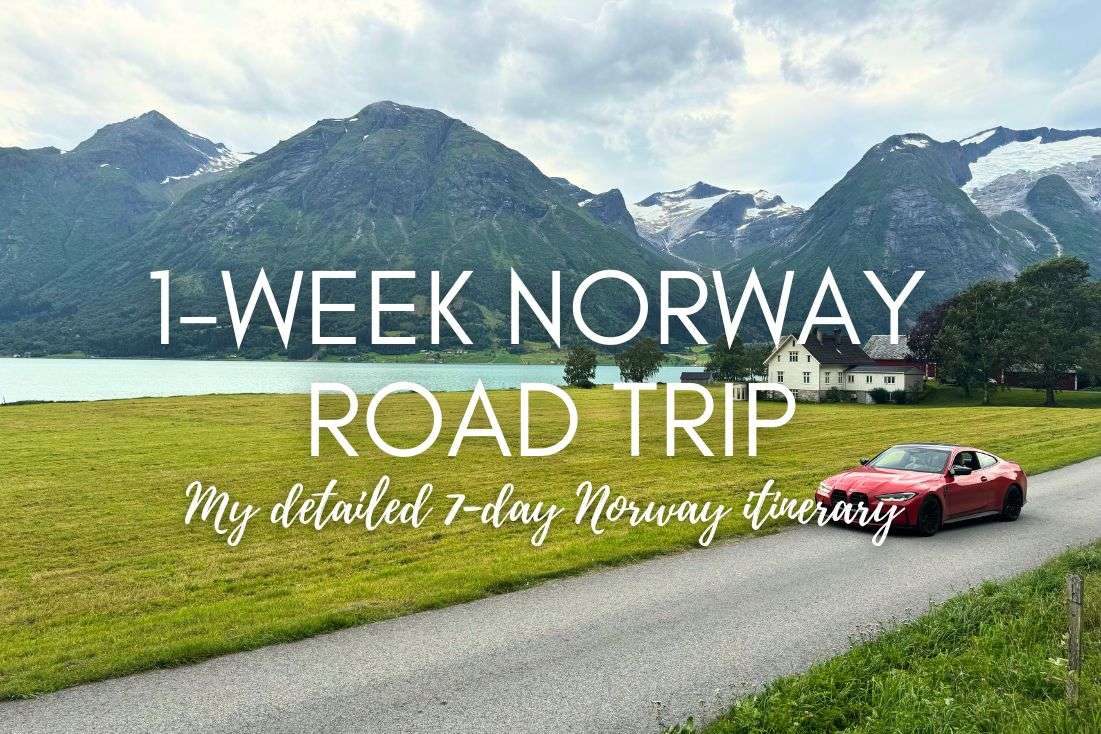



Comments | Thoughts? Give us a shout!